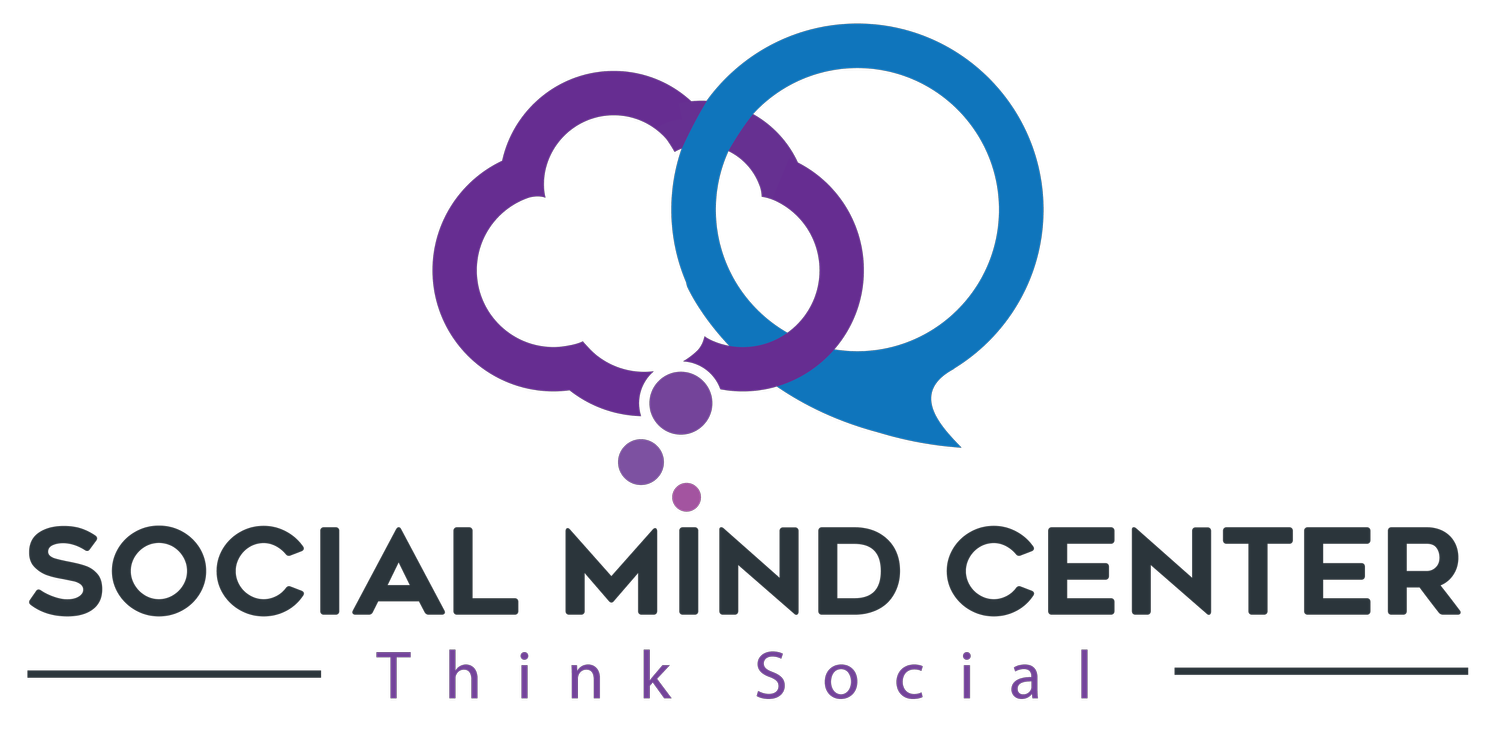WHY WE PLAY GAMES IN SOCIAL GROUPS?
Take Interest
In what they love. When we meet our children at the place of their interest we have an opportunity to connect. We also have an opportunity to model being a good sport and thinking of others.
At the Social Mind Center, we have an extensive collection of games, and most groups end with a game. Why do we play games in social groups? Play is an essential component of building social communication and competency. In my opinion, we have seen an increase in conflicts at schools due to the decrease in play at school.
Play promotes:
sharing space
sharing attention
sharing turns - turn taking
All these skills are equally important and fundamental in the development of language and social communication. They promote connection. Can you think of a social scenario where turn-taking is not required?
My children are young adults now. I join into their world to keep connecting.
Having the undivided attention of a teen is challenging with so much competing for their attention. The connections start when they are very young. The strategy is the same. Join them rather than expecting them to always join you in your preferred activities. Share experiences that build towards a together tradition. When my son was a toddler I sat with him and joined him in whatever he was doing. Now we do the same, we love to go out to dinner together and enjoy great food. He now is into formula one I ask him about his favorite drivers and ask him to teach me.
Be intentional about approaching your children to listen and to join in their world. Learn to love what they love and play what they play.
My daughter loves to go out to dinner or to find a trendy coffee shop. We share many loves together. This building countless opportunities to share experiences.
When playing games we role-play and practice skills in three areas social language, perspective-taking, and executive function (self-control).
1. Social Language is what word combinations are best in what situations. The words we use to make social connections
Using language for different purposes, changing the language to the needs of the listener, following rules of conversation and storytelling
words to resolve conflict
words to seek assistance
words to express a struggle
words to express emotions and feelings
words to build a relationship
words to explain your differences and the desire to belong and be understood
using non-verbal language (body-posture, facial expression, eyes)
Model
2. Perspective-taking and
Theory of Mind
(ToM) is the ability to connect feelings or emotional states to yourself and others; understanding that others have thoughts that may differ from yours. The ability to understand that others have different thoughts, emotions, and ideas than you.
Understanding the hidden social rules for games or small group activities
sharing space
listening
cooperating
making tough choices
being a good sport - thinking of others
bonding
social attention
3. Executive Function is a group of three skills that allows kids to manage thoughts, actions, and emotions in order to get things done. It allows kids to plan, manage and organize. Executive Function skills of self-regulation is being able to ignore distraction and resist temptation. A child may use this skill to keep from blurting out an answer in class, regulate their emotions, and keep from acting impulsively.
Turn-taking
Transitions
Waiting
Focusing/staying on task
Flexibility
Emotional regulation
Following directions
Sequencing
Additional Resources:





